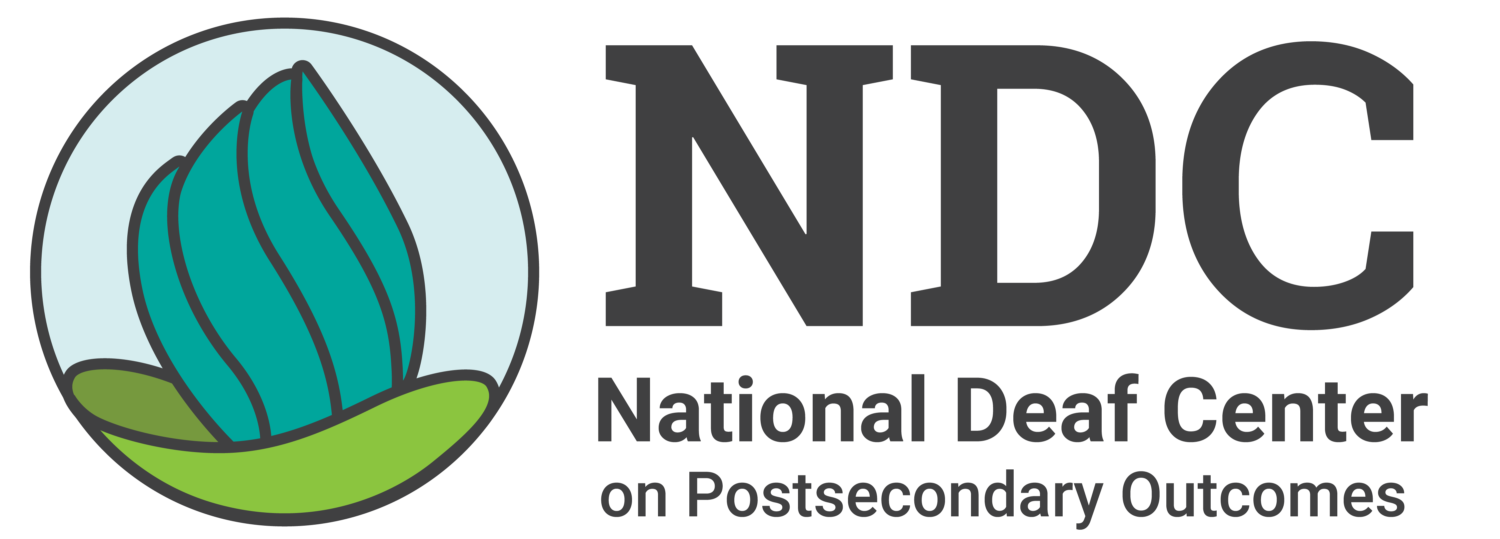Are Disabled Students Part of Campus Decision-Making?
Colleges across the country are working to create more welcoming environments, but one key question remains: Are deaf students and students with other disabilities being meaningfully included in the decisions that affect them?
Too often, institutions rely on one-way communication instead of building intentional, ongoing feedback systems. For deaf students in particular, this gap is clear. A recent National Deaf Center survey found that over half of deaf college students (52%) said their disability services office never asked for formal feedback about service providers, and only 40% of institutions rated their feedback systems as “good” or “excellent.”
That’s a missed opportunity for real progress.
At NDC, we believe that centering student feedback, especially those of deaf and disabled students, is essential to building responsive, accessible systems. One promising model? Student advisory boards. These groups give students the power to shape campus decisions, policies, and culture—moving beyond box-checking and toward real change.
What Student Advisory Boards Look Like
Here are some examples of how colleges are using student advisory boards in disability and access spaces, and a few tips for how institutions can make these groups even stronger:
- West Virginia University (WVU)
Students meet four times each year to help plan events, give feedback, and talk about what’s working—and what’s not.
Sonoma State University
A group of students, teachers, and staff meet to look at school policies and suggest improvements on how the campus can better support students with disabilities.
University of Tennessee, Knoxville
A group of 10–12 students gives feedback on services and helps make campus more welcoming for students with disabilities.
University of Chicago
Students meet with campus leaders twice each quarter to share ideas for making things more accessible across campus.
Lehman College (CUNY)
Students meet several times each semester to share concerns and raise awareness about the challenges that students with disabilities face and suggest new ways to help.
Western New England University
Students meet with campus staff a few times a year to give feedback and ideas about services. The board meets every few months and members serve for one full school year.
University of Maryland
Monthly meetings are held with staff from the Accessibility & Disability Service office to talk about what’s going well and what still needs to improve.
Texas A&M University
A group of 10–15 students meets at least once a semester to review policies and give suggestions. They serve terms ranging from 9 to 18 months.
Cal State East Bay
Students apply to be part of this official campus committee, which meets monthly to share feedback on accessibility services.
If you’re interested in what minutes may look like from a student advisory committee meeting, check out a sample example here.
What Students Are Saying
Student advisory boards can only succeed when they’re designed to meet students where they are—because barriers show up in many ways. When done well, student advisory boards create space for students to share not just opinions, but experiences that drive meaningful change.
In a recent study, students with disabilities expressed strong interest in serving on program committees, policy boards, and advisory councils. The students emphasized that they bring a distinct and often overlooked perspective—one that reflects the specific needs and interests of disabled students. Their desire to participate stems from a call for more meaningful representation and greater visibility on campus. However, even well-meaning efforts can unintentionally create exclusion if they aren’t designed with accessibility in mind. For example, advisory boards that require in-person attendance, lack flexible options, or use complex language may prevent students from engaging in the very systems meant to support them.
This aligns with findings from the study Environmental Influences on Disabled Students’ Cocurricular Involvement, where students identified three major types of barriers to participation:
- Physical – Inaccessible buildings, snow-blocked paths, and limited mobility access.
- Social – Stigma, low expectations, or isolation from campus life.
- Organizational – Confusing policies, unclear communications, and no way to offer input.
Many students point to organizational barriers as a major reason they don’t participate. Even when colleges try to be helpful, they may create more problems if they don’t plan well.
Ask yourself:
- Does the board allow flexible participation—including virtual, asynchronous, or recorded options?
- Are materials clear and accessible—like plain language agendas or visual aids?
- Are expectations and timelines communicated in advance—and co-developed with students?
When advisory boards are built to include—not just invite—students, they become powerful engines for institutional change.
Tips for Creating Stronger Student Boards
While every board looks a bit different, there are several promising practices that can help ensure that student feedback is authentic, representative, and results in meaningful improvements:
- Invite a Mix of Student Voices
Make sure students with all types of disabilities are included—such as deaf students, students with chronic illness, mental health needs, or mobility disabilities. Everyone’s experience matters, but avoid tokenism. Some campuses reserve seats for specific groups to ensure meaningful representation. - Pay Students for Their Work
Giving feedback takes time, energy, and expertise. Students should be paid through stipends, hourly wages, or course credit. If hourly pay isn’t an option (e.g., for international students), stipends can ensure students are compensated fairly—just like any other campus consultant. - Make Meetings Work for Everyone
Meetings should be accessible and welcoming by design. This may include interpreters, live captioning, plain language versions of agendas, materials shared ahead of time, or asynchronous options like video recordings or surveys. Offer multiple ways to engage—online, in-person, or hybrid—so every student can participate fully. - Let Students Help Lead & Follow Through
Empower students to help set the agenda, identify priorities, and see how their input leads to action. This not only builds trust but gives students a meaningful role in shaping their campus experience. - Create a Culture of Connection
Advisory boards should be part of a larger effort to foster belonging. Consider hosting mentoring programs, student leadership opportunities, informal gatherings, and events that build lasting relationships.
When colleges create real spaces for honest feedback and shared leadership, they build stronger, more supportive schools for everyone. Want help starting a student advisory board on your campus, improving a program that’s already been established, or support in making sure that deaf students are included? Contact NDC’s Help Team at help@nationaldeafcenter.org—we’re here to help!









